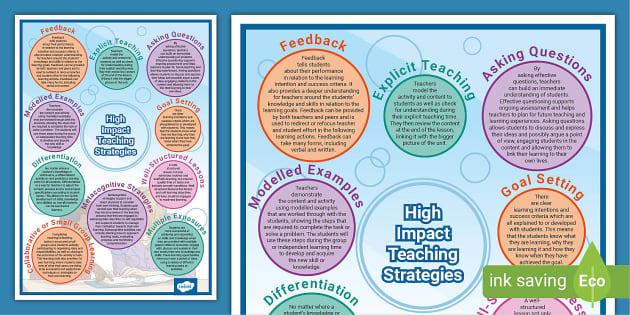Future-Proofing Education: Top Strategies Policymakers Need to Know for Long-Term Success
in an era of rapid technological innovation, unpredictable disruptions, and shifting workforce demands, the need to future-proof education has never been more urgent.Policymakers face the unique challenge of crafting education strategies that ensure both adaptability and long-term success. by adopting forward-thinking policies, investing in skills-based learning, and fostering resilience, our education systems can empower the next generation to thrive in an ever-changing world. In this article, we explore essential strategies, actionable tips, case studies, and first-hand experiences to guide policymakers in building resilient, future-ready education systems.
Why Is Future-Proofing Education Essential?
The future of education is being shaped by globalization, automation, artificial intelligence, and unexpected events such as pandemics. Traditional models are no longer enough—education systems must prepare students for jobs that may not yet exist, technologies that are still emerging, and challenges we can’t fully predict.
- Workforce change: New industries are displacing old ones. Students need adaptable, transferable skills.
- Rapid technological change: Knowledge quickly becomes outdated. Continuous learning is key.
- Global citizenship: Future citizens must be culturally aware, collaborative, and equipped to tackle societal issues.
- Resilience against disruption: From pandemics to economic shifts, schools and curricula must adapt quickly.
Top Strategies for Policymakers to Future-Proof Education
Policymakers play a crucial role in shaping the direction and resilience of education. Here are the most impactful strategies for future-proofing education systems:
1. Emphasize Skills-Based Learning Over Content Memorization
- Promote critical thinking, creativity, and problem-solving: These are fundamental life skills employers increasingly seek.
- Develop digital literacy and coding skills: Integrate technology and computational thinking early and across subjects.
- encourage adaptability and resilience: Teach students how to learn, unlearn, and relearn.
2. Integrate Emerging Technologies Into the Curriculum
- Leverage artificial intelligence and machine learning: Offer exposure to relevant technologies and their societal implications.
- implement blended and personalized learning: Use data and adaptive technology to cater to diverse learning paces and styles.
- Ensure equitable access: Bridge the digital divide,ensuring all students have access to devices and connectivity.
3. Foster Lifelong Learning Pathways
- Encourage upskilling and reskilling: Support ongoing professional development for both students and teachers.
- Create flexible certification models: Recognise micro-credentials, online learning, and apprenticeships alongside traditional diplomas.
- Partner with businesses and higher education: Align curricula with labor market needs and emerging trends.
4. Prioritize teacher Training and Support
- Invest in professional development: Enable educators to master digital tools and innovative teaching strategies.
- Promote collaborative communities of practice: Encourage knowledge sharing among teachers for continuous improvement.
- Enhance support and well-being: Address burnout and mental health to keep talented teachers in the profession.
5. Design for Equity, Inclusion, and Well-being
- Close achievement gaps: Focus on underserved and marginalized student populations.
- Support diverse learning needs: Offer resources for special education and English language learners.
- Integrate social and emotional learning (SEL): Emphasize well-being as a core component of future readiness.
Practical tips for Policymakers Looking to Future-Proof Education
- Regularly update curricula to reflect technological advancements and societal needs.
- Establish advisory panels including industry leaders, teachers, and students for ongoing feedback.
- Invest in robust digital infrastructure in schools nationwide.
- Champion public-private partnerships to bring real-world projects and mentorships into schools.
- Embed sustainability education to prepare students for climate-related challenges.
Benefits of Future-Proofing Education
Investing in the future-readiness of education yields significant, long-term benefits for society, the economy, and individual learners:
- Economic resilience: A robust, adaptable workforce is better equipped to weather economic fluctuations.
- Reduced unemployment: Graduates with relevant skills transition more smoothly into in-demand jobs.
- Social cohesion: Equitable education systems foster cultural understanding and civic participation.
- Personal growth: students gain confidence, versatility, and a lifelong love of learning.
- Innovation and leadership: Empowered learners drive progress in all sectors.
Case Studies: Future-Proofing Education in Action
Singapore: Education for a Volatile World
Known for its world-class education system, Singapore regularly updates school curricula to anticipate future needs. The nation’s SkillsFuture initiative encourages citizens of all ages to continually upgrade their skills, while teachers receive ongoing training in digital instruction and mental health support.
finland: Embracing Student-Centered Innovation
Finland emphasizes creativity, student agency, and teacher autonomy. Students have flexible pathways, and project-based learning is common. The Phenomenon-Based Learning approach integrates real-world themes across subjects, nurturing critical thinking and adaptability.
First-Hand Experience: Transforming U.S. Public Schools
In various U.S. states, educators share how integrating blended learning and personalized instruction increased student engagement and outcomes. As an example, the Summit Learning Program empowers students to set goals and track their own progress, adapting challenges to individual strengths and needs.
First-Hand Viewpoint: What Teachers & Students Say
A future-proof education system is not only defined by policy but by real experiences on the ground. Teachers express the need for:
- Continuous training to keep up with evolving technologies and pedagogies
- Access to mental health resources for both teachers and students
- Time and flexibility to design project-based and interdisciplinary lessons
Students, meanwhile, value:
- Learning environments that foster curiosity and creativity
- Greater exposure to real-world challenges and hands-on learning experiences
- Opportunities to shape their own learning pathways and career goals
Conclusion: Securing the Future of Education Starts now
To future-proof education, policymakers must act proactively to design systems that are both resilient to disruption and adaptable to new opportunities. Investing in skills-based learning, technology integration, teacher empowerment, and equitable access ensures all students are ready for whatever the future holds.
By implementing forward-thinking education strategies and learning from global case studies,governments and educators can cultivate a generation of lifelong learners and leaders. The time to act is now—because the schools of today shape the world of tomorrow.
ready to shape the future of education? Start with these strategies and empower your students, teachers, and communities for long-term success!

